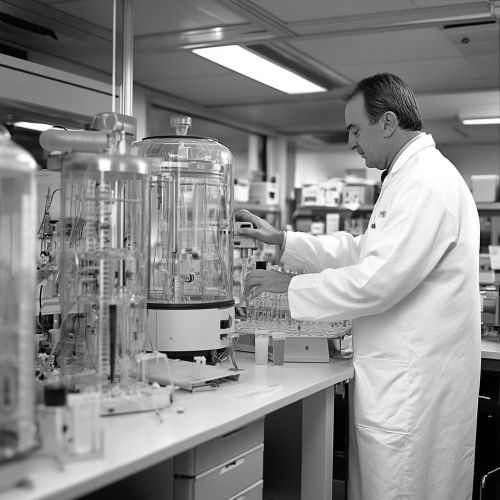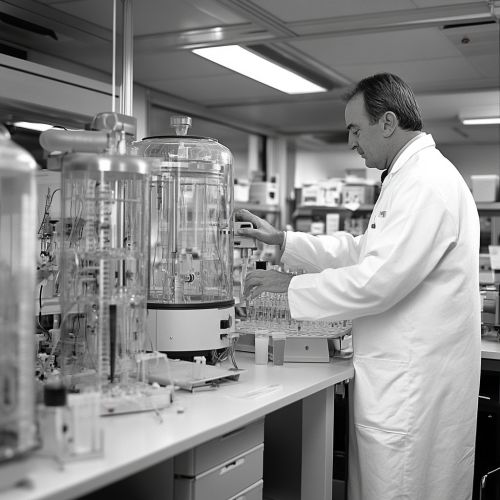Martin Karplus
Early Life and Education
Martin Karplus was born on March 15, 1930, in Vienna, Austria. He was the son of Jewish parents, Hugo Karplus and Rosa Karplus (née Schreiber). The family fled Austria in 1938 to escape the Anschluss, the annexation of Austria by Nazi Germany, and settled in the United States. Karplus attended the Newton High School in Newton, Massachusetts, and later went on to study at Harvard University, where he received his Bachelor of Arts degree in 1950. He completed his Ph.D. in 1953 under the supervision of Linus Pauling at the California Institute of Technology.
Academic Career
Early Research
Karplus's early research focused on the application of quantum mechanics to chemical systems. His doctoral work under Linus Pauling involved the study of the electronic structure of molecules, which laid the foundation for his future contributions to theoretical chemistry. After completing his Ph.D., Karplus worked as a postdoctoral fellow with Charles Coulson at the University of Oxford and later with Walter Kohn at the University of Illinois.
Harvard University
In 1966, Karplus joined the faculty of Harvard University, where he became a professor of chemistry. His research at Harvard focused on the development of theoretical models to understand the behavior of complex chemical systems. He made significant contributions to the field of molecular dynamics, particularly in the study of protein folding and enzyme catalysis.
Molecular Dynamics Simulations
Karplus is perhaps best known for his pioneering work in molecular dynamics simulations. These simulations involve the use of computational methods to study the motion of atoms and molecules over time. Karplus developed algorithms and software that allowed scientists to simulate the behavior of biological macromolecules, such as proteins and nucleic acids, with unprecedented accuracy. His work in this area has had a profound impact on the fields of biochemistry and structural biology.
Major Contributions
Karplus Equation
One of Karplus's most notable contributions is the Karplus equation, which describes the relationship between the dihedral angle of a molecule and the coupling constant observed in nuclear magnetic resonance (NMR) spectroscopy. This equation has become a fundamental tool in the analysis of NMR data and has been widely used to determine the three-dimensional structures of proteins and other biomolecules.
Protein Folding
Karplus's research on protein folding has provided critical insights into the mechanisms by which proteins attain their functional three-dimensional structures. He developed computational models that simulate the folding process, allowing scientists to study the pathways and intermediates involved. His work has helped to elucidate the factors that influence protein stability and folding kinetics.
Enzyme Catalysis
Karplus has also made significant contributions to the understanding of enzyme catalysis. He used molecular dynamics simulations to study the mechanisms by which enzymes accelerate chemical reactions. His research has provided detailed insights into the role of enzyme dynamics in catalysis and has helped to identify key residues involved in the catalytic process.


Awards and Honors
Nobel Prize in Chemistry
In 2013, Martin Karplus was awarded the Nobel Prize in Chemistry, along with Michael Levitt and Arieh Warshel, for their development of multiscale models for complex chemical systems. This work combined classical and quantum mechanical approaches to provide a more comprehensive understanding of chemical reactions. The Nobel Committee recognized their contributions as transformative for the field of computational chemistry.
Other Recognitions
Karplus has received numerous other awards and honors throughout his career. These include the Irving Langmuir Award in Chemical Physics, the Linus Pauling Medal, and the American Chemical Society's Peter Debye Award in Physical Chemistry. He is a member of the National Academy of Sciences and a fellow of the American Academy of Arts and Sciences.
Personal Life
Martin Karplus is married to Marci Karplus, and they have two children. In addition to his scientific pursuits, Karplus is an avid photographer and has published several books of his photographs. His work often focuses on capturing the beauty of natural landscapes and the intricacies of everyday life.
Legacy and Impact
Martin Karplus's contributions to theoretical chemistry and molecular dynamics have had a lasting impact on the scientific community. His work has advanced our understanding of the fundamental principles governing chemical reactions and the behavior of biological macromolecules. The tools and models he developed continue to be used by researchers worldwide to study a wide range of chemical and biological systems.
See Also
- Quantum Mechanics
- Nuclear Magnetic Resonance Spectroscopy
- Protein Folding
- Enzyme Catalysis
- Molecular Dynamics
